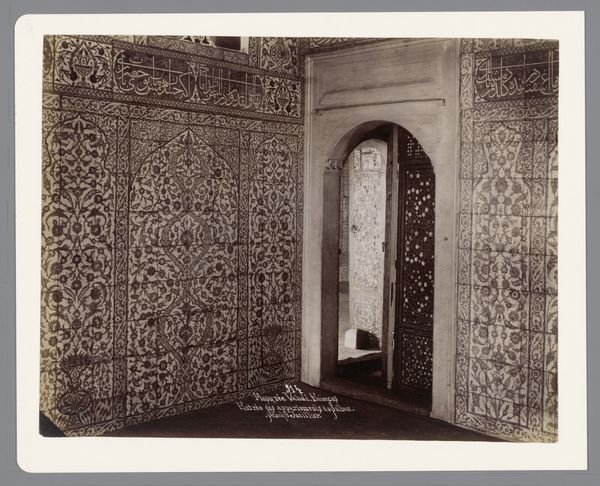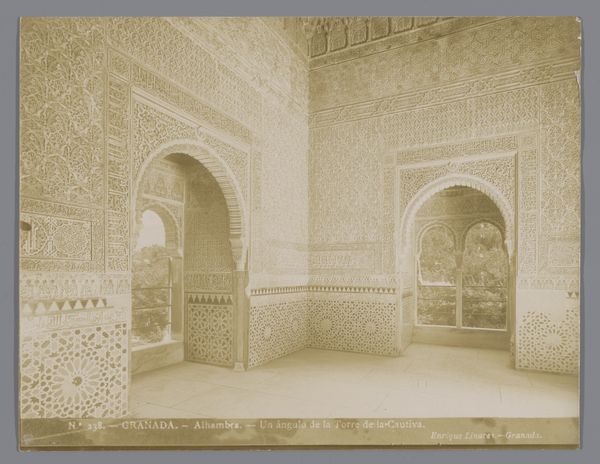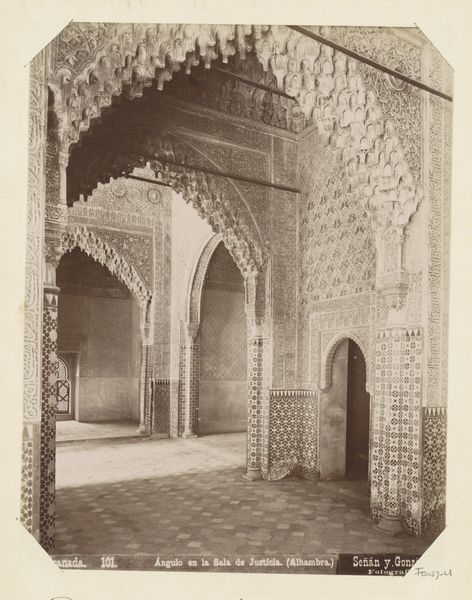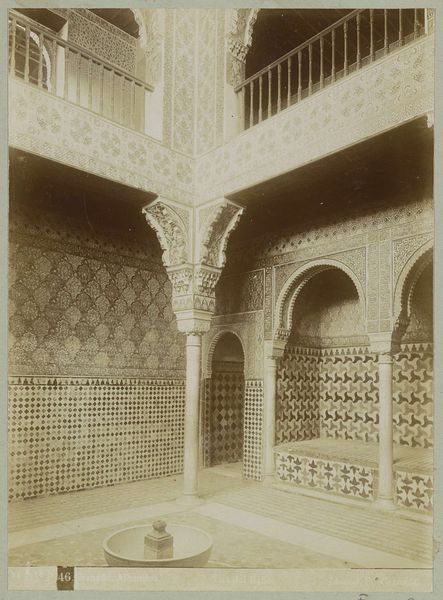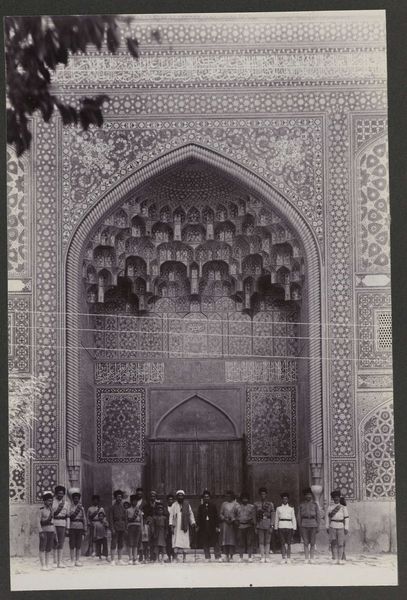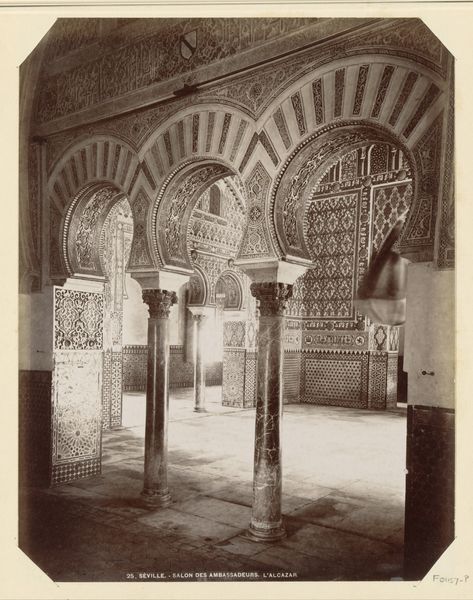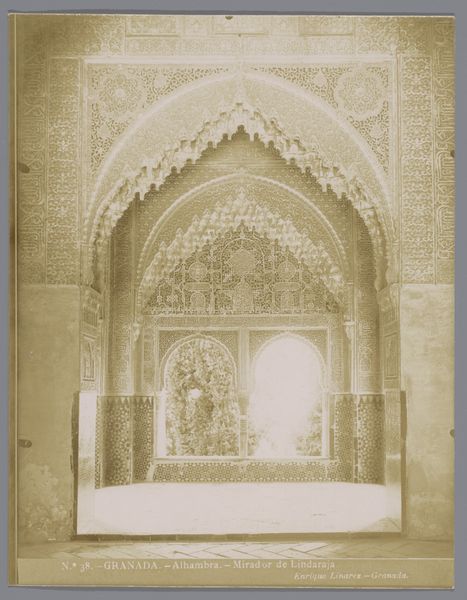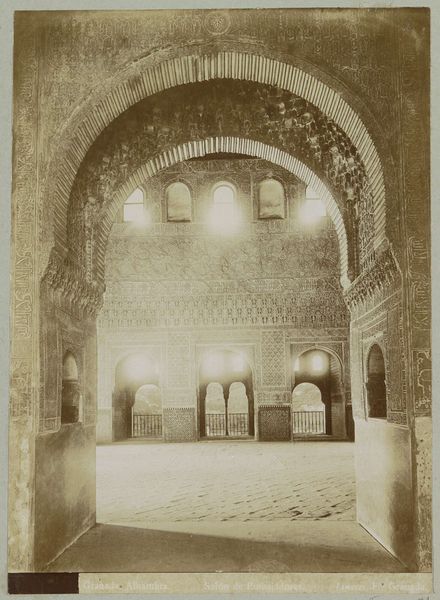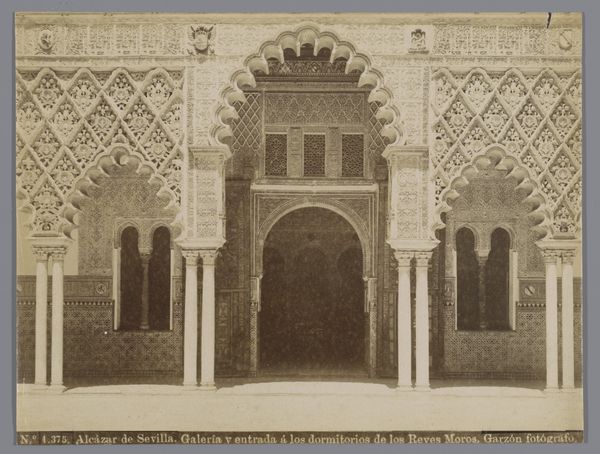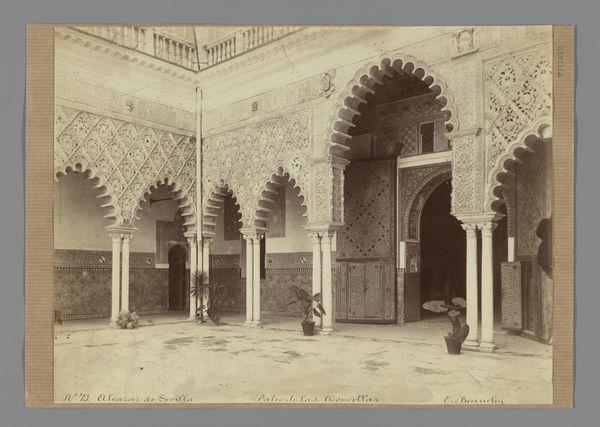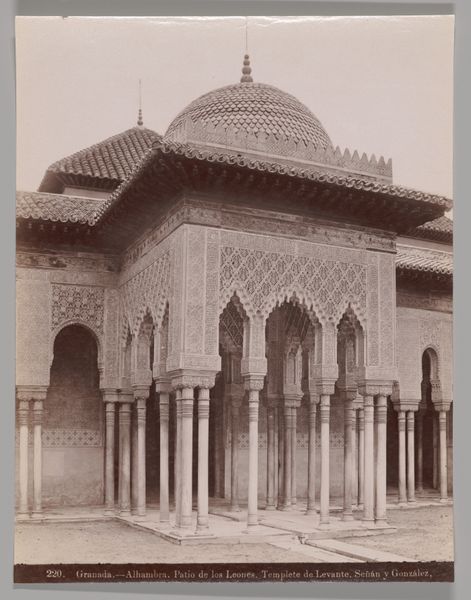
print, photography, architecture
#
surveyor photography
# print
#
sculpture
#
historic architecture
#
traditional architecture
#
photography
#
building art
#
geometric
#
islamic-art
#
architecture
Dimensions: height 175 mm, width 123 mm
Copyright: Rijks Museum: Open Domain
Curator: The sepia tones in this print by F. Linares really strike me. It's called "Nicho del Koran in het Alhambra," taken sometime between 1860 and 1900. It depicts an alcove within the Alhambra. What’s your initial impression? Editor: The level of detail is stunning! The intricate tilework and the calligraphy all vying for attention create a feeling of ornate seclusion. Curator: Right. The production of photographs like these, especially back then, allowed for wider dissemination of architectural wonders. It's a form of image labor, producing knowledge through documenting architecture that catered to a growing orientalist market. The materiality of photography itself – the paper, the chemicals, the printing process – became part of that commercial network. Editor: And how that architectural image functions! We're not just looking at pretty shapes. This "Nicho del Koran," or niche, marks a sacred space for prayer and devotion, meant to direct the user towards Mecca. I’m intrigued by how such spaces navigate identity. Islamic identity, Moorish identity, Spanish identity--how do they converge here? Curator: It is important to also consider how the act of photographing altered this sacred space for commercial reasons. Creating the photo meant controlling light, selecting an angle, posing, all potentially disruptive acts for what’s supposed to be a personal, spiritual place. We're capturing not just faith but also commodification. Editor: Precisely. Photography allows us to understand these historic dynamics. The gaze, the perspective chosen by Linares... does it truly honor the spirituality, or does it transform a site of devotion into an object of exotic curiosity consumed by the West? Curator: Exactly! Moreover, look at those tessellating geometric designs. Every tile had to be made, placed... each bit is individual but creates a whole that becomes more than just tiles or decorations, but becomes integral to that devotional function. Consider the skill, labor, and production involved! It becomes evident that architecture is more than design. It is also a socio-economic expression. Editor: That intersection of geometry, faith, and labor... the Alhambra stands as a testament to cross-cultural exchange. Yet that rich history must always be reconciled with what Spain did with Islamic cultural influence by establishing its own identity of power and control in its aftermath. It is through recognizing this that we avoid simplified and idealized notions. Curator: Yes. A photo reveals how structures change as a site but remain charged with contested historical memories. Editor: Ultimately, by acknowledging the multi-faceted complexities that photographs reveal, we deepen our ability to explore art's connection to our contemporary social landscape.
Comments
No comments
Be the first to comment and join the conversation on the ultimate creative platform.


